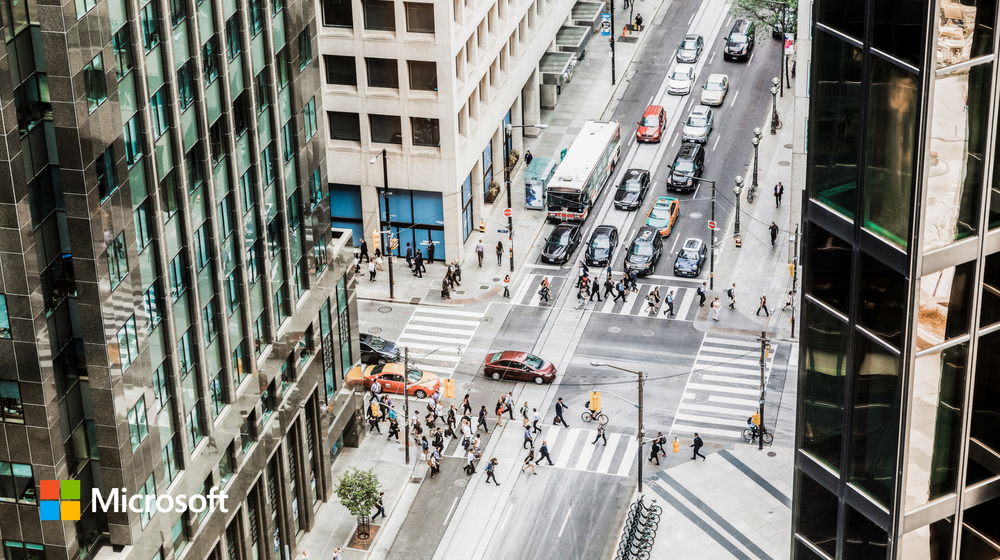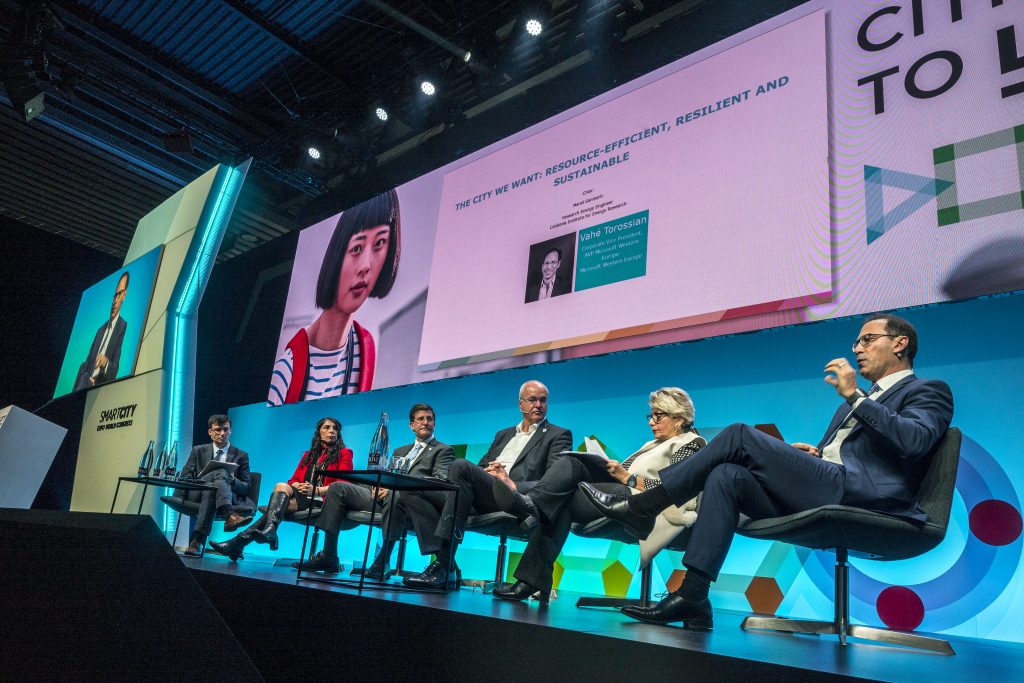
Intelligent cities are here: A Smart City Expo World Congress recap

See some of the following stories in action, including blogs and videos, in our “Latest news from Microsoft CityNext”
Together with 32 of our CityNext partners at Smart City Expo World Congress 2018 (SCEWC), we showed how cities can become more intelligent and connected. We focused on innovative technologies for four key scenarios: optimizing urban mobility, building smarter infrastructure, improving citizen and social care, and enhancing public safety.
[msce_cta layout=”image_center” align=”center” linktype=”blue” linkurl=”https://info.microsoft.com/ww-landing-Smart-City-Solutions-Infographic.html?lcid=en-us&wt.mc_id=AID723261_QSG_SCL_326299″ linktext=”Explore the Smart City Solutions Infographic” ][/msce_cta]
If you missed SCEWC18—which took place Nov. 13 – 15 in Barcelona, Spain—or simply couldn’t see everything you’d hoped to see, you can still catch up. Check out our “Latest news from Microsoft CityNext” with insights from thought leaders, interviews with partners highlighting industry trends, and hear from customers how becoming an intelligent, connected city is helping them improve people’s quality of life.
Becoming more resilient
A water main breaks. A significant weather event occurs with destructive results. Is your city ready? Our gold-sponsor partners and a couple of Microsoft customers took on these scenarios in our Intelligent Cities Forum, to show how connecting city departments can make a city more resilient. Watch these Facebook videos to see how your city can benefit from digital twins, predictive energy management, collaborative operational solutions, and citizen engagement. Special thanks to the following partners and customers:
Partners: ABB, Bentley, Cubic, Diehl, Envision, Genetec, Innodep, KPMG, PwC
Customers: San Diego Police Dept and MälarEnergi
Getting ahead of urban mobility challenges
It’s predicted that the average urban dweller will spend 106 hours in traffic jams by 2050 and that there will be 2.5 billion cars on the road. Air pollution, traffic congestion, greenhouse emissions—these are some of the biggest problems facing cities. At SCEWC18, we showed city leaders how they can optimize urban mobility to help them tackle those challenges. They were able to see how they can connect citizens to a variety of adaptive mobility options, break down data siloes, provide real-time journey options, and implement proactive intelligent assets.
During the “Enhancing Urban Mobility” keynote, Marijke De Roeck, Director of Communication and Participation from the city of Antwerp, talked about how Antwerp uses a solution from our partner BeMobile to provide citizens with mobility as a service. Citizens can use the cloud and AI-powered solution to connect to a variety of mobility options—such as trains, buses, ridesharing, and more—and find the optimum way to get where they’re going. Cities can also use such intelligent transportation solutions to help them optimize journey management and enhance parking and revenue systems.
Increasing sustainability with smarter infrastructure
At SCEWC18, city leaders also learned how they can improve urban environments by reducing energy and water consumption, improving building system efficiencies, and creating more productive work environments with an intelligent cloud and intelligent edge platform.
In the plenary panel session “The City We Want: Resource-efficient, Resilient, and Sustainable,” Vahe Torossian, Corporate Vice President of Microsoft Western Europe, shared how the convergence of AI and the Internet of Things (IoT) has been a strong catalyst for cities’ digital transformation over the last 12 months. Many cities are moving from pilots to IoT built in from the start. He said that according to our partners, over the past year cities have significantly increased the implementation of digital transformation technology solutions for resource efficiency, resiliency, and sustainability. He also mentioned that the ecosystem around an intelligent platform is really what is building value for cities.

Improving citizen, social care, and accessibility
Microsoft spoke at a solutions session on “Delivering Innovative Citizen Services” and shared how the City of Espoo in Finland takes advantage of AI to gain data insights that helps it provide better citizen services for vulnerable populations. For example, its AI-powered customer service is helping the city to be more proactive in supporting residents in at-risk groups.
Espoo is innovating by digitizing municipal services, utilizing new technology, bringing services online, and adopting new operating methods. The city’s primary goal is to optimize the quality and experience of public services for its citizens. And it’s doing so in a way that’s helping it to improve efficiency and reduce costs.
Take your next step in becoming an intelligent city
Learn how you can take advantage of cloud and AI technology to become an intelligent city by reading the Gartner IoT report “Three Rules When Using AI to Add Value to Your IoT Smart Cities.” It offers practical guidance on how to strategically plan your IoT smart city journey one step at a time.




